Key takeaways:
- Sustainability in events involves a conscious experience that incorporates eco-friendly practices, like local catering and digital tools, to minimize waste and inspire others.
- Implementing sustainable practices can enhance an event’s reputation, attract engaged audiences, and lead to significant cost savings through local sourcing and reduced waste.
- Challenges in sustainability include budget constraints, stakeholder skepticism, and logistical issues, which require effective communication and system implementation to overcome.
- The future of sustainability in events may see a shift towards integral planning and hybrid formats, driven by audience expectations and technological innovations.

Understanding sustainability in events
Sustainability in events goes beyond just choosing eco-friendly materials; it’s about creating a conscious experience that resonates with attendees. I remember attending a conference that made a genuine effort to minimize waste—reusable cups, digital agendas, and local catering. It felt refreshing to be a part of something that valued both the planet and the participants.
When I think about the impact of event planning on the environment, I often wonder: How much difference can a single event really make? The truth is, every small change adds up. From energy-efficient lighting to incorporating virtual attendance options, I’ve seen firsthand how these choices not only reduce carbon footprints but also inspire others in the industry to do the same.
Engaging with sustainability in events isn’t just a trend; it’s an essential shift in mindset. I often reflect on how incredible it felt to participate in an event that actively sought to give back to the community. It made me realize that by prioritizing sustainable practices, we’re not just hosting events—we’re nurturing a culture of responsibility that can leave a lasting impact.
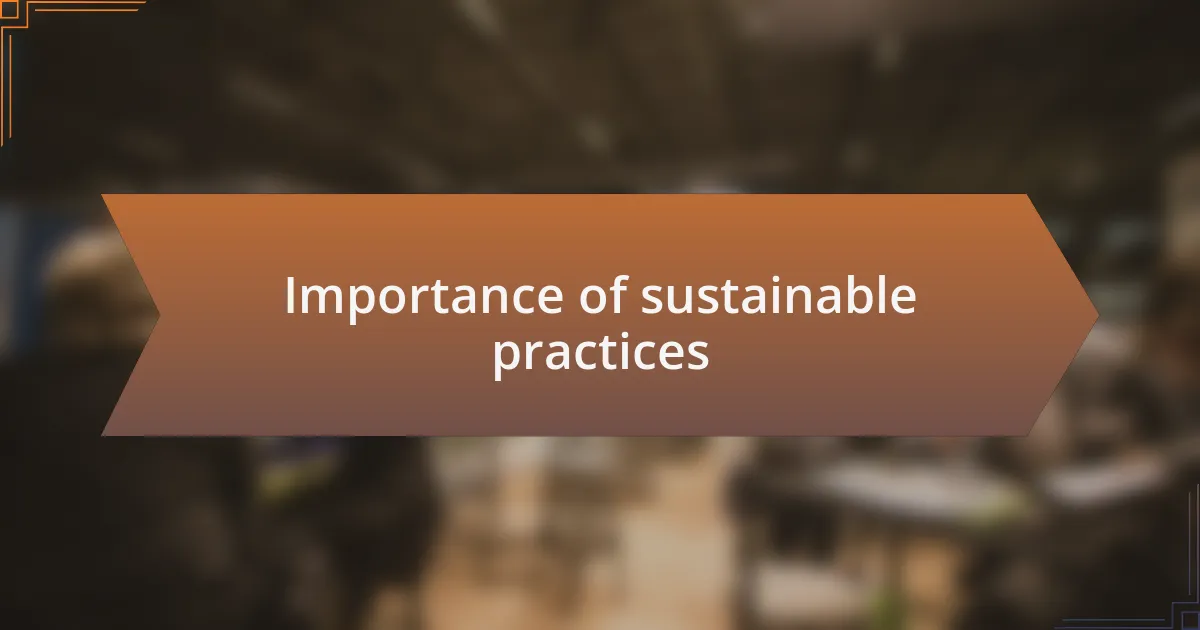
Importance of sustainable practices
Sustainable practices hold immense importance because they foster a sense of responsibility among event organizers and attendees alike. I recall a small festival I attended where the organizers worked tirelessly to offset their carbon emissions by planting trees with the proceeds. This small initiative not only contributed to reforestation but also inspired attendees to think about their own environmental impact—didn’t it feel good to be part of something meaningful?
Moreover, implementing sustainable practices can significantly enhance an event’s reputation. I’ve seen how companies that prioritize sustainability often attract a more engaged audience, eager to support businesses that align with their values. For instance, one event I attended prominently displayed its sustainability efforts, and it felt empowering to be surrounded by like-minded individuals. Doesn’t it make sense that consumers are more likely to choose brands that demonstrate a commitment to the environment?
On another level, sustainable practices in event management can lead to long-term cost savings. I have experienced events that utilized local resources and services, which, besides being eco-friendly, reduced expenses significantly. When I think about the future of event planning, I question how these compelling advantages—both ethical and financial—can convince more organizers to embrace sustainability wholeheartedly. Wouldn’t we all benefit from a more conscious and responsible approach to how we gather and connect?
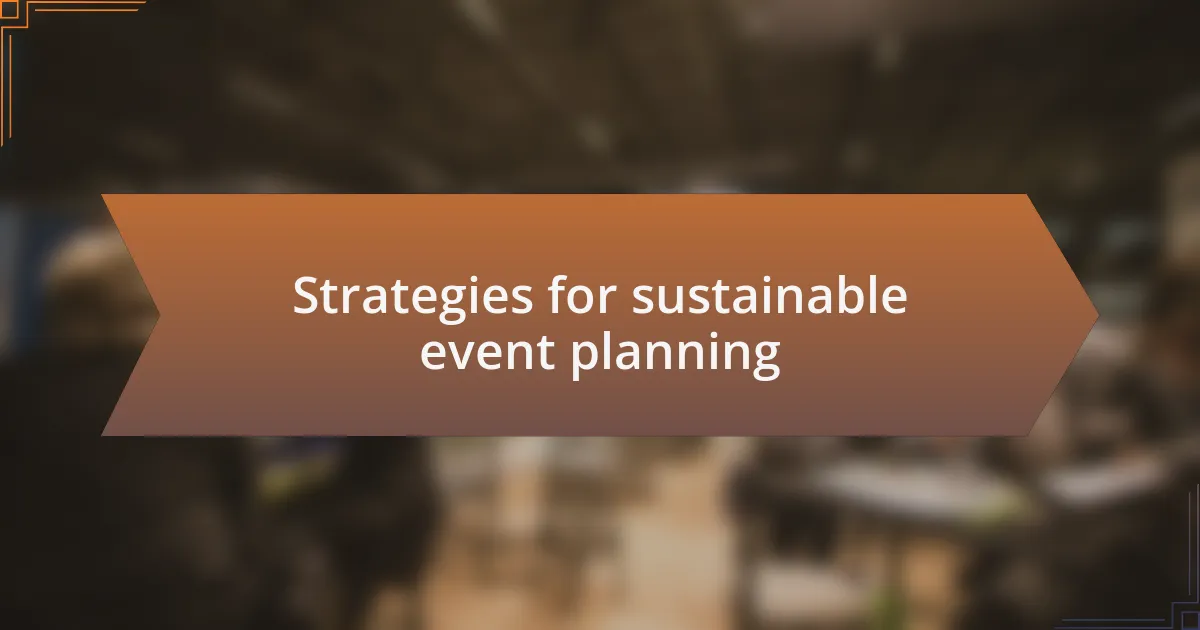
Strategies for sustainable event planning
One effective strategy for sustainable event planning is prioritizing local vendors and suppliers. In my experience, partnering with local businesses not only reduces transportation emissions but also fosters a sense of community. I remember an event where we sourced catering from nearby farms; the food was fresher, and attendees loved connecting with the local producers. How often do we overlook that connection to our surroundings?
Another approach worth considering is minimizing waste through thoughtful planning. I once attended a corporate event that utilized digital ticketing and apps to keep printed materials to a minimum. This not only cut down on paper waste but also streamlined guest experience. Isn’t it rewarding to see how technology can play a role in creating environmentally-friendly events?
I also believe that encouraging attendees to adopt sustainable habits during events can have a significant impact. At a conference I organized, we challenged guests to use reusable water bottles by providing refill stations throughout the venue. Not only did this reduce single-use plastics, but it also sparked conversations around sustainability. Can we imagine the ripple effect if every event took similar steps?

Case studies of successful events
When I think about successful sustainable events, one that stands out is a music festival I attended last year. It featured a comprehensive recycling and composting program, which was clearly communicated to attendees. My heart swelled when I saw the enthusiastic participation – people genuinely cared about sorting their waste. Isn’t it amazing how a shared purpose can transform the typical festival vibe into something so much more meaningful?
Another remarkable case was a regional trade show that implemented a carbon offset program for all its exhibitors. I remember talking to a few vendors who were proud to contribute to reforestation efforts in our area. This initiative not only offset their carbon footprint but also created a compelling narrative that attracted more attendees interested in sustainable practices. How often do we find ourselves drawn to brands that align with our values?
I can’t forget to mention a community health fair that I organized, which prioritized eco-friendly transportation options for attendees. We partnered with a local bike-sharing program, offering discounts and incentives for those who chose to pedal in. The energy at the event was electric as participants shared their bike routes and experiences. Isn’t it incredible how small actions can lead to larger conversations about health and sustainability?
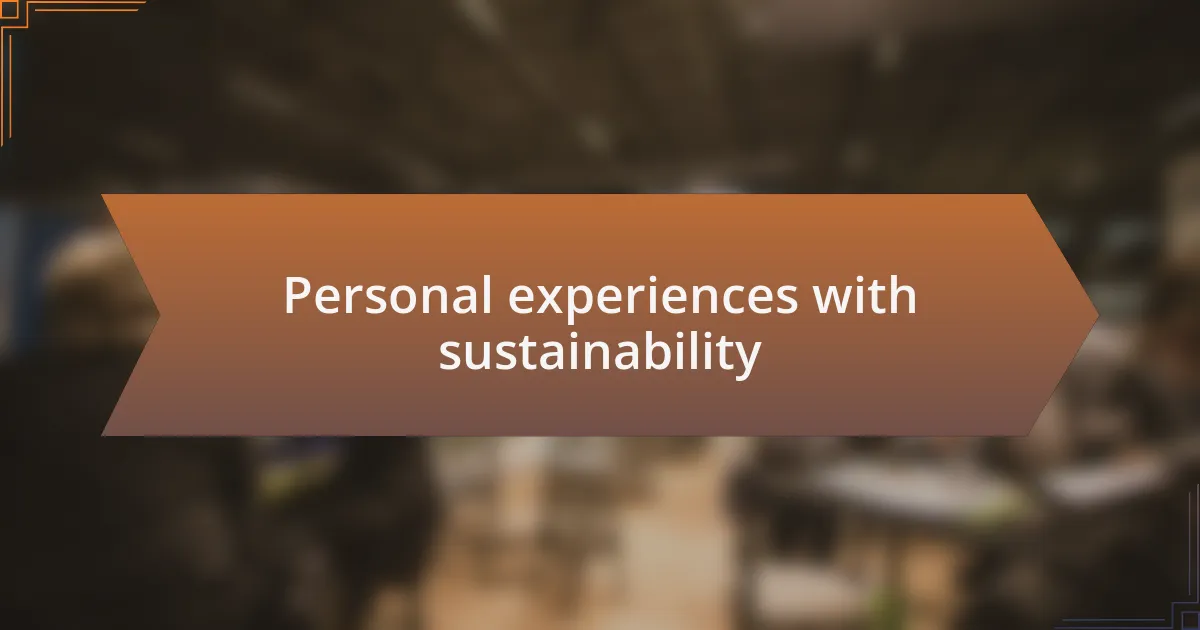
Personal experiences with sustainability
I remember my first experience with sustainability at an outdoor market I visited. The vendors not only offered local produce but also shared stories about their sustainable farming practices. As I listened, I felt a deep connection to the food I was buying, knowing it supported local agriculture and reduced my carbon footprint. Who knew that a simple shopping trip could foster such awareness and responsibility?
At a recent corporate event, I was struck by how they incorporated sustainability into every aspect, from the catering to the materials used for event signage. They served plant-based meals, which I found surprisingly delicious, and provided reusable water bottles instead of single-use plastics. It made me rethink my own choices; small changes can lead to significant impacts. Have you ever thought about how your choices at events could influence sustainability?
I also took part in a community cleanup event last spring, which beautifully highlighted the power of collective action. As we picked up litter from the beach, I felt a wave of camaraderie with my fellow volunteers. Each piece of trash we collected seemed to symbolize the responsibility we share for our environment. Doesn’t it feel rewarding to contribute to something greater than ourselves?
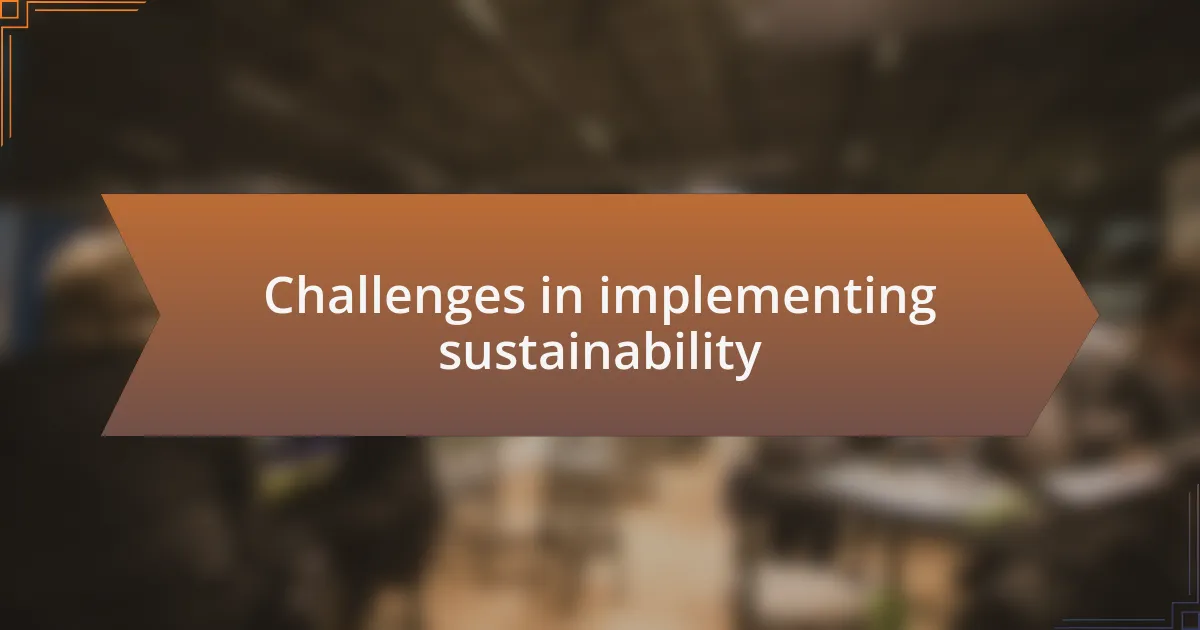
Challenges in implementing sustainability
The journey to implement sustainability in events is often hindered by budget constraints. I’ve been part of event planning teams where incorporating eco-friendly materials seemed financially out of reach. I found myself wondering, could the upfront investment lead to long-term savings and benefits that aren’t immediately apparent?
Another challenge I frequently encounter is stakeholder buy-in. During one particular event planning session, the push for sustainable practices was met with skepticism from sponsors who worried about the perceived costs. It made me realize: how can we effectively communicate the value of sustainability to those who hold the purse strings?
Then there’s the issue of logistics. I recall a conference I attended that aimed to be zero waste. While ambitious, the lack of proper systems in place meant that many recyclable materials still ended up in the trash. This experience left me pondering: How can we bridge the gap between intention and execution so that lofty sustainability goals translate into real, measurable actions?
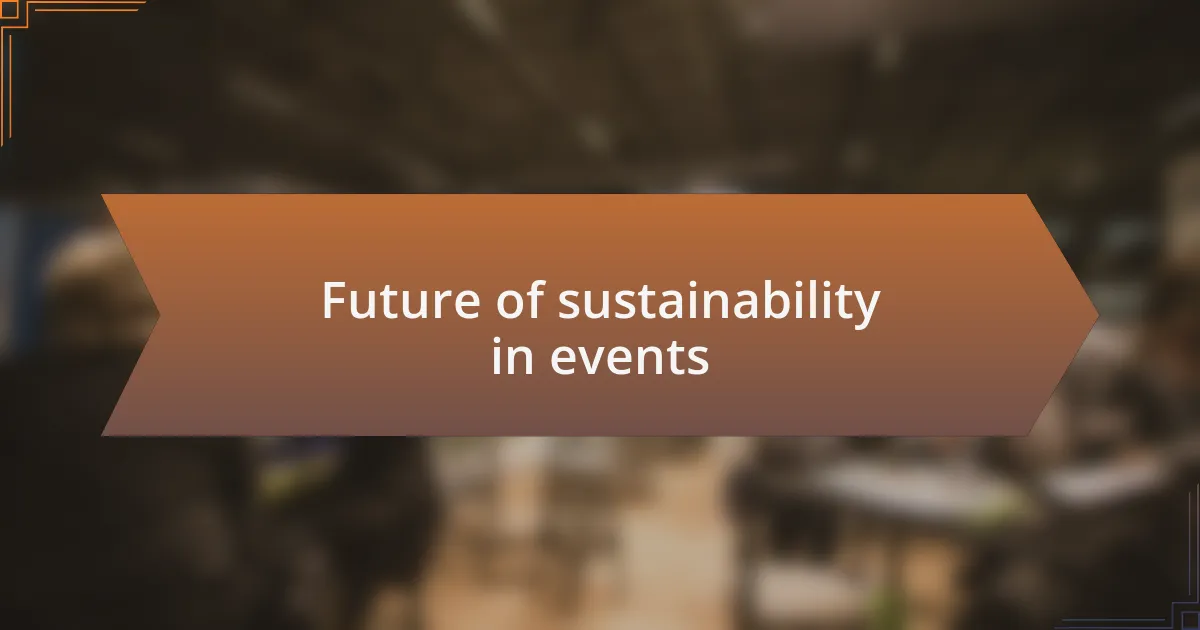
Future of sustainability in events
Looking ahead, I envision a shift where sustainability isn’t just an add-on; it becomes integral to the very fabric of event planning. I recall a festival I attended where everything from the food vendors to the seating arrangements was designed with sustainability in mind, creating a seamless experience that felt both enjoyable and responsible. This experience sparked a thought: How can we leverage technology to streamline sustainable practices, making them a natural choice rather than a challenge?
I believe we will see a rise in hybrid events as a sustainable solution. I’ve seen firsthand how virtual components can reduce carbon footprints by cutting travel needs. This raises an interesting question: In a world that thrives on human connection, how do we balance the need for physical gatherings with the environmental impact they bring, all while keeping the essence of community alive?
As the demand for greener events grows, I think we’re on the brink of a revolution in how we source materials and design schedules. I’ve noticed that audiences are becoming increasingly vocal about their expectations for sustainability. This begs the question: Will event organizers respond proactively by innovating their processes, or will they wait until sustainability is a baseline expectation instead of a competitive advantage?